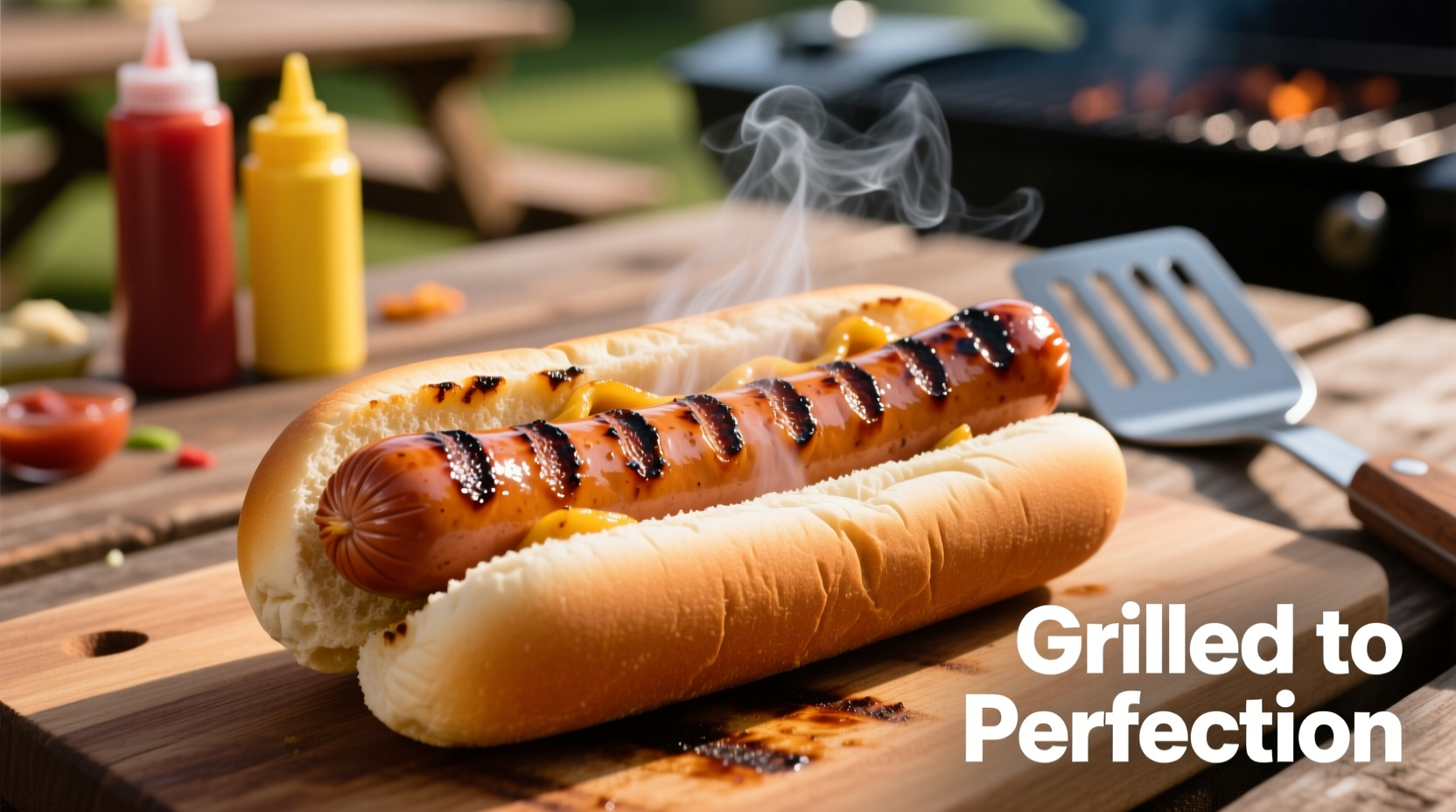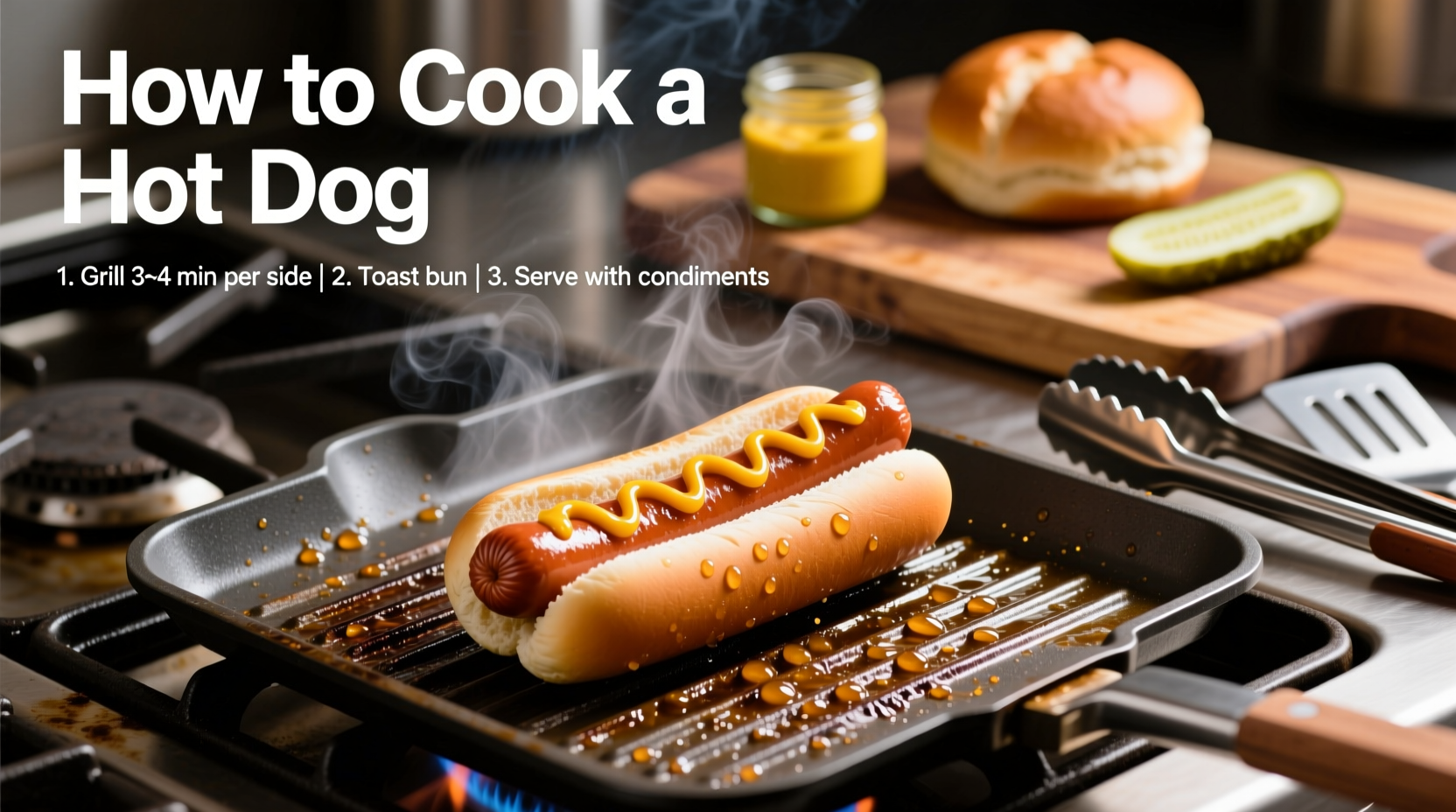The fastest and most flavorful way to cook a hotdog is by grilling over medium heat for 7-10 minutes, turning frequently until evenly browned with grill marks and reaching an internal temperature of 165°F (74°C). This method preserves the snap of the casing while enhancing flavor through caramelization.
Mastering the Perfect Hotdog: Simple Techniques for Backyard Cooks
Whether you're hosting a summer barbecue or craving a quick weeknight meal, knowing how to cook a hotdog properly transforms this humble staple into something special. Despite being pre-cooked, hotdogs benefit from proper heating techniques that enhance texture and flavor while ensuring food safety. This guide covers four reliable methods with professional insights you won't find elsewhere.
Why Proper Hotdog Cooking Matters More Than You Think
Many home cooks simply boil hotdogs until they're rubbery or over-char them on the grill. But the right technique creates that perfect snap when you bite into it—the hallmark of a quality hotdog experience. Underheating risks foodborne illness, while overheating destroys texture. Let's explore the methods that deliver consistent results.
4 Proven Methods to Cook Hotdogs Perfectly
| Cooking Method | Time Required | Best For | Texture Result | Flavor Enhancement |
|---|---|---|---|---|
| Grilling | 7-10 minutes | Outdoor entertaining | Snappy casing, slight char | Smoke infusion, caramelization |
| Pan-Frying | 5-8 minutes | Indoor cooking, quick meals | Evenly browned, slightly crisp | Maillard reaction development |
| Steaming | 4-6 minutes | Classic street-style hotdogs | Plump, juicy throughout | Preserves natural flavors |
| Boiling | 3-5 minutes | Emergency situations only | Soft, sometimes mushy | Least flavorful method |
Grilling: The Gold Standard for Hotdog Cooking
Grilling remains the preferred method for hotdog enthusiasts seeking that authentic char and smoky flavor. Follow these steps for perfect results every time:
- Preheat your grill to medium heat (350-400°F / 175-205°C)
- Lightly oil the grates to prevent sticking
- Place hotdogs diagonally across the grates for attractive grill marks
- Turn every 2 minutes using tongs (never pierce with a fork)
- Cook for 7-10 minutes until internal temperature reaches 165°F (74°C)
- Look for slight blistering but avoid charring beyond 20% of surface
According to USDA food safety guidelines, properly reheating hotdogs to 165°F destroys potential listeria bacteria that can develop during storage. This temperature is critical for vulnerable populations including pregnant women and immunocompromised individuals.

Avoiding Common Hotdog Cooking Mistakes
Even experienced cooks make these preventable errors that ruin hotdogs:
- High heat disasters: Cooking over too-high heat causes casing rupture before interior heats properly
- Skipping the thaw: Frozen hotdogs need 30 minutes at room temperature before cooking
- Overcooking: More than 10 minutes on the grill dries out hotdogs and creates harmful compounds
- Wrong bun preparation: Toast buns lightly to prevent sogginess from hotdog juices
Pro Tips for Next-Level Hotdog Flavor
Professional chefs use these techniques to elevate basic hotdogs:
- Add a teaspoon of beer or broth to the pan when frying for subtle flavor infusion
- Make shallow diagonal cuts before grilling to increase surface area for caramelization
- Wrap hotdogs in bacon for added fat and smoky complexity (secure with toothpicks)
- Use a cast-iron griddle indoors for consistent browning without flare-ups
- Chill hotdogs for 15 minutes before cooking to help maintain casing integrity
Hotdog Cooking Through the Years: A Brief Timeline
Understanding how hotdog preparation has evolved helps explain why certain methods work best today:
- 1860s: German immigrants sold steamed frankfurters from street carts in New York
- 1893: First documented grilled hotdogs at Chicago World's Fair
- 1920s: Boiling became popular with the rise of inexpensive hotdog stands
- 1950s: Post-war backyard grilling culture elevated hotdog preparation
- Present: Food science informs modern techniques balancing safety and quality
This historical context explains why steaming remains popular for Chicago-style hotdogs while grilling dominates elsewhere—different regions developed distinct preparation traditions based on available equipment and cultural preferences.
When to Choose Each Cooking Method
Not all situations call for the same technique. Consider these context boundaries:
- Grilling works best: For outdoor entertaining, when you want smoky flavor, with natural casing hotdogs
- Pan-frying shines: During winter months, for quick weeknight meals, with skinless varieties
- Steaming excels: For classic New York or Chicago street-style hotdogs, when preserving natural flavor is priority
- Boiling should be limited: Only when no other equipment is available, for emergency situations
Serving Your Perfectly Cooked Hotdog
The final presentation makes all the difference. Follow these professional serving guidelines:
- Warm buns by placing them on the grill for 30-60 seconds (cut side down)
- Apply condiments in the right order: mustard first, then relish, onions, and finally ketchup (if using)
- Place the hotdog at a slight angle in the bun for optimal presentation
- Serve immediately while hotdogs are at peak temperature (140-150°F)
- Pair with classic sides like potato chips, coleslaw, or pickles
Hotdog Safety Guidelines You Shouldn't Ignore
While hotdogs are pre-cooked, food safety remains crucial. The Centers for Disease Control and Prevention (CDC) reports that improperly handled hotdogs contribute to listeria outbreaks, particularly affecting vulnerable populations. Always:
- Refrigerate hotdogs below 40°F (4°C) until ready to cook
- Use within 7 days of opening the package
- Heat to 165°F internal temperature, especially for at-risk individuals
- Avoid cross-contamination with raw meats
- Discard hotdogs left at room temperature for more than 2 hours
Troubleshooting Common Hotdog Problems
Fix these frequent issues with professional solutions:
- Splitting casings: Cook at lower temperature, avoid piercing, chill before cooking
- Bland flavor: Add aromatics to boiling water (onion, garlic, bay leaf) or use beer when pan-frying
- Soggy buns: Lightly toast buns and place paper napkin underneath hotdog
- Dry texture: Don't overcook, use quality hotdogs with higher fat content
- Uneven heating: Turn frequently, avoid overcrowding cooking surface











 浙公网安备
33010002000092号
浙公网安备
33010002000092号 浙B2-20120091-4
浙B2-20120091-4